
Massive explosion rocks Beirut: Before and after images show extensive damage
Improperly stored ammonium nitrate may have been the cause.
Dennis Wagner, and George Petras, USA TODAY
Updated 4:17 p.m. MDT Aug. 6, 2020
Corrections and clarifications: This story originally misstated the title of Stephen Beaudoin, Stephen Beaudoin, a chemical engineering professor
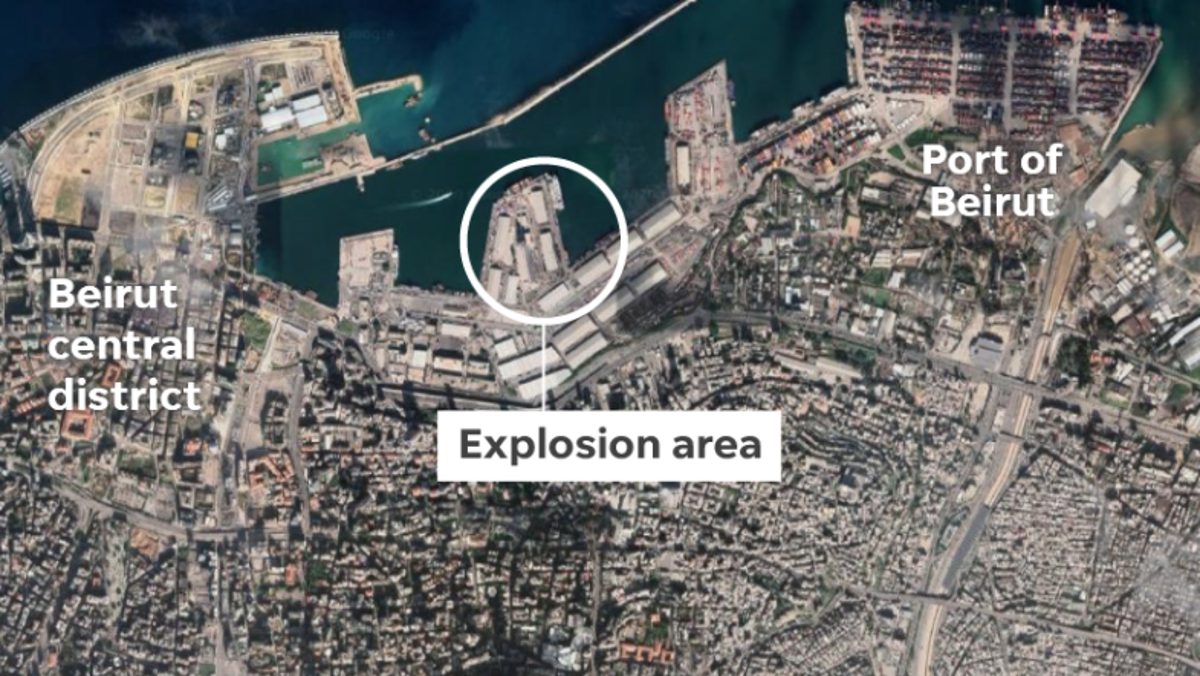
Experts say the world may never know exactly what triggered a massive explosion that shook Lebanon on Tuesday, killing at least 135 people and injuring thousands more.
But immediate video evidence suggests the chain of events began with a fire – rather than a terrorist or military attack – detonating tons of stored ammonium nitrate and obliterating a portion of Beirut.
But immediate video evidence suggests the chain of events began with a fire – rather than a terrorist or military attack – detonating tons of stored ammonium nitrate and obliterating a portion of Beirut.
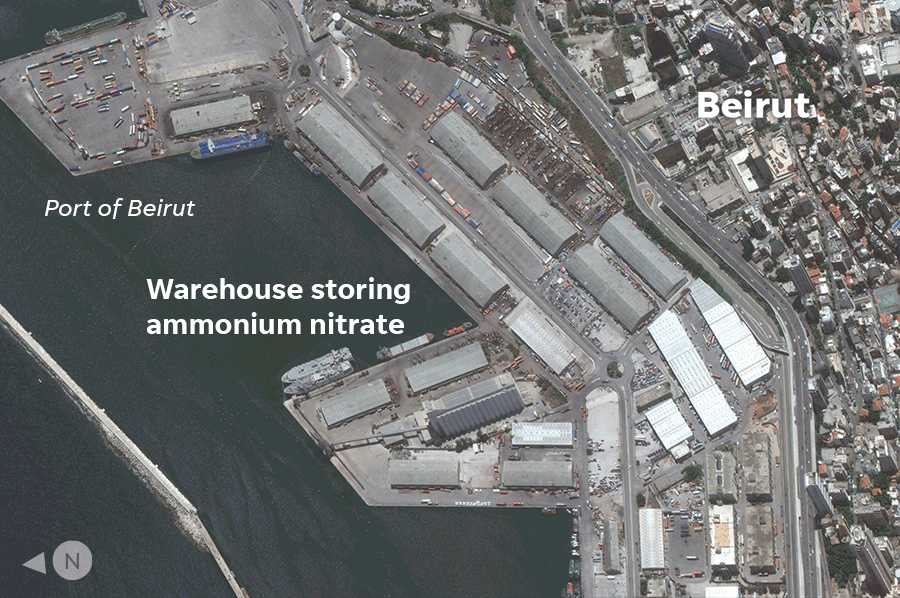
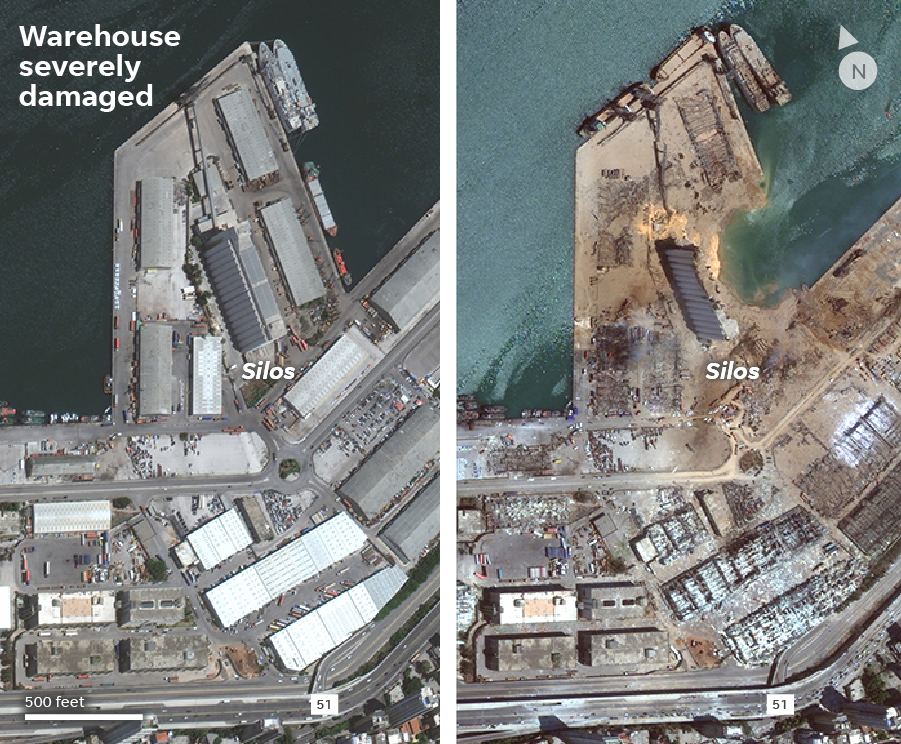
BREAKING - Death toll reaches 100+ in #Beirut, #Lebanon pic.twitter.com/IUDPRJ3Oli
— SV News 🚨 (@SVNewsAlerts) August 5, 2020
In the aftermath, Lebanese officials have said more than 2,700 tons of the chemical ammonium nitrate were stored unsafely in warehouses near the port after being seized from a cargo ship in 2014.
The explosion had the force of at least 500 tons of TNT, according to a U.S. government source who was not authorized to speak publicly. The estimate was based on the widespread destruction, said the source, who has experience with military explosives.
The blast caused carnage over a 6-mile radius and was felt more than 100 miles away.
The chemical has been linked to past industrial accidents, including explosions at a fertilizer plant in Texas in 2013, a Chinese port in 2015 and many others.
And it all stems from a tiny pellet, known as a “prill,” which is routinely used as fertilizer and is vital to the world’s food supply.
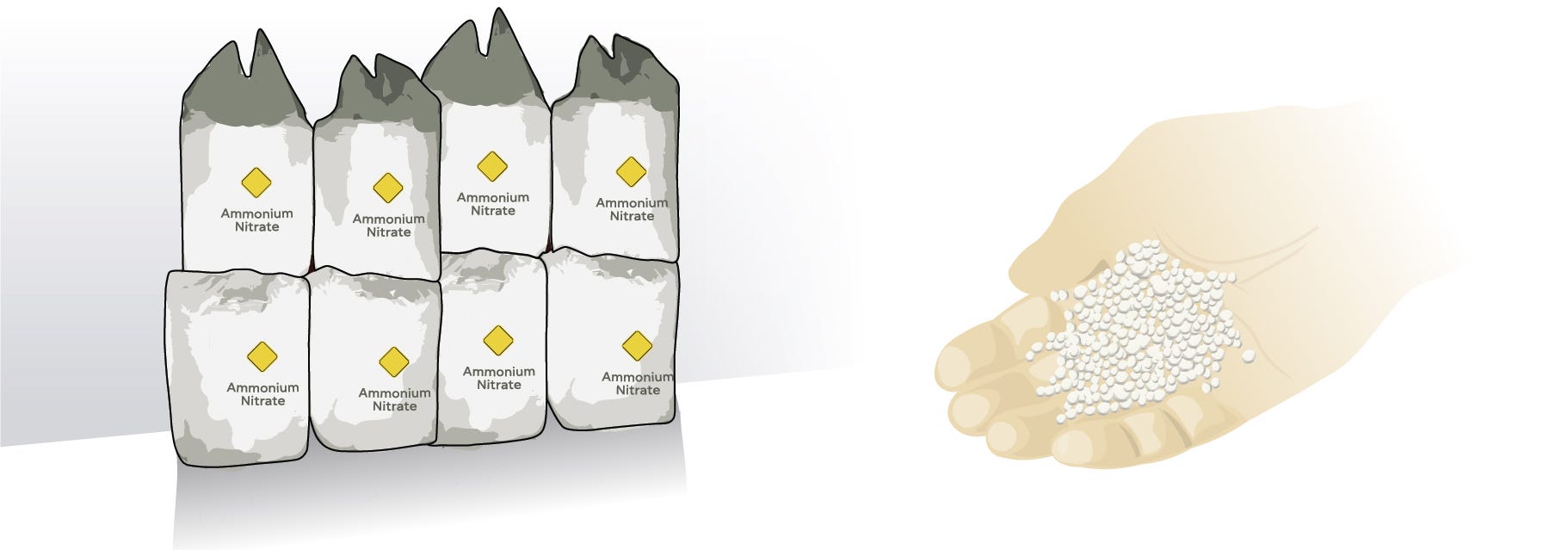
What is ammonium nitrate, and why is it so deadly?
Ammonium nitrate is commonly used in mining, construction and other heavy industries as an inexpensive and effective explosive. Millions of tons are produced annually and it has largely replaced dynamite, which is less safe.
Jimmie Oxley, a University of Rhode Island chemistry professor, said AN now accounts for about 80% of explosives manufactured in the United States.
“It’s a wonderful material,” she added, noting AN’s impact on world agriculture. “The invention of ammonium nitrate allows us to have 7 billion people today.”
Massive explosion shook Beirut with force of 3.5 magnitude earthquake
Lebanese authorities believe the deadly Beirut explosion could be tied to highly explosive ammonium nitrate, which was stored at the port for years.
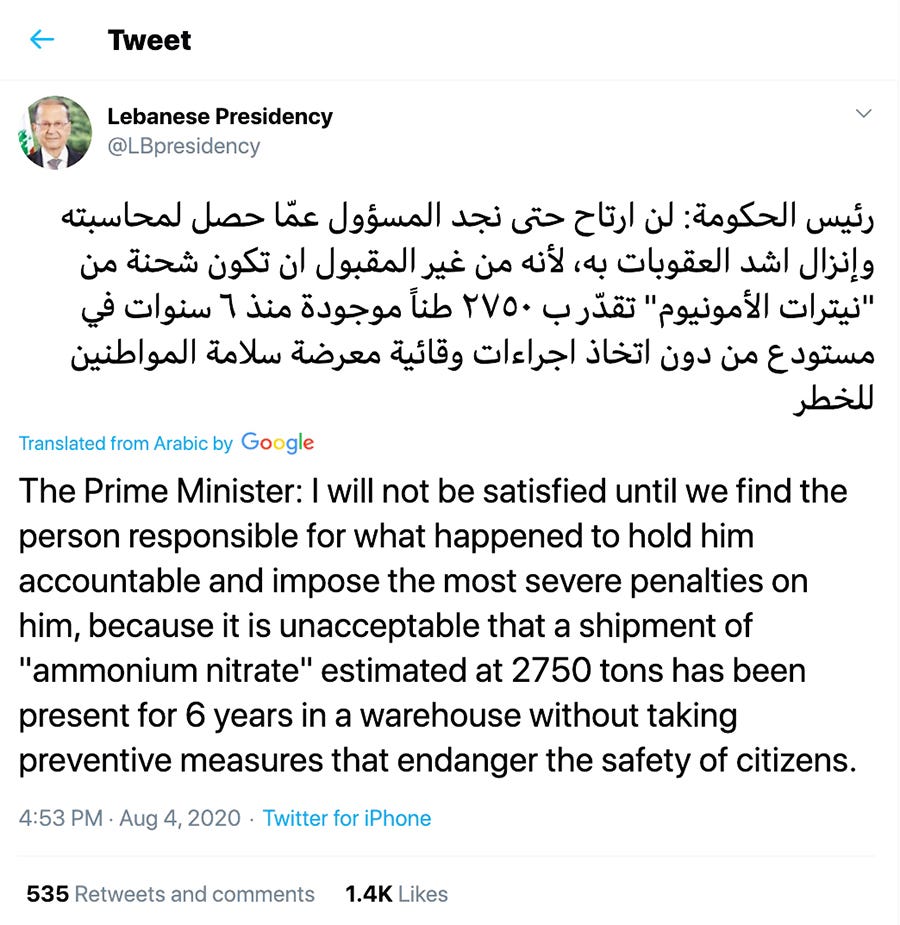

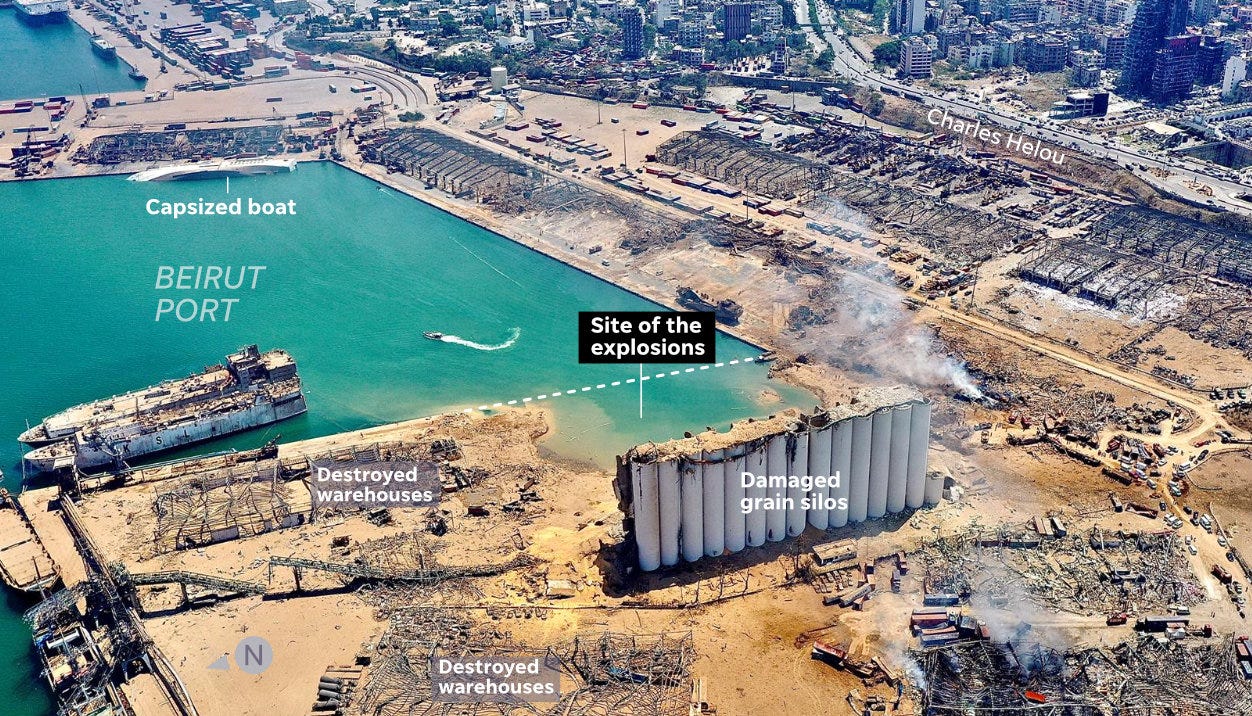
USA TODAY, ASSOCIATED PRESS
While the substance is found in nature, commercial ammonium nitrate is man-made. It’s relatively inexpensive and available around the world. It's valued as fertilizer in farming for its nitrogen content and is used to make ANFO – ammonium nitrate/fuel oil – an explosive in mining and construction operations.
The synthetic substance is a combination of ammonia and nitric acid. It’s sold as a colorless crystalline solid but processed into porous pellets, known as prills, for various applications.
Ammonium nitrate does not burn on its own, but its oxygen content is highly concentrated in prill size. The prills are mixed with oil or other combustibles to make explosives for mining.
Storage is critical. Left unchecked, ammonium nitrate can be contaminated by industrial elements such as fuel oil. The chemical can also decompose on its own, generating heat.
The result is an explosion that releases gases, including nitrogen dioxide, which is orange or reddish in color.
Beirut disaster videos show a gray cloud rising from the port, in what appears to be a large industrial fire. A building explodes, creating an orange-reddish cloud, followed closely by a white mushroom cloud as a shock wave hits.
Stunning video shows explosions just minutes ago at Beirut port pic.twitter.com/ZjltF0VcTr
— Borzou Daragahi 🖊🗒 (@borzou) August 4, 2020
Stephen Beaudoin, a chemical engineering professor and director of Purdue University’s Energetics Research Center, said ammonium nitrate pellets are not particularly unsafe.
“When you hold them in your hand, they look like birdseed,” he said. But they become potent when heated or mixed with other chemicals and detonated.
Beaudoin said news video of the Beirut event suggests there was a fire that would have set AN off in a confined space once temperatures hit about 400 degrees Fahrenheit or higher.
He and Oxley said that chain of events was reflected in a large plume that rose over Beirut, followed by a massive shock wave and a mushroom cloud.
“What I saw was a lot of black smoke and a lot of red smoke,” Oxley said. “I would argue it wasn’t intended.”
Beaudoin said that when ammonium nitrate is exposed to heat, the chemical compound (NH4-NO3) decomposes into nitrous oxide and water, instantly taking up thousands of times more volume.

“It’s a massive expansion – unbelievable expansion – that’s going to happen in fractions of a second,” Beaudoin said. “And that’s when you saw the huge release of energy.”
While the blast appeared to be set off by a fire, Oxley said it may be impossible to trace where or how the blaze started.
“Usually, with these accidents, it’s very hard to pinpoint exactly what set it off,” she noted. “Why was it in storage? I suspect it was a series of mistakes.”
Has something like this happened before?
Yes, in fact, the destructive power of ammonium nitrate is common knowledge, and tragedies have occurred sporadically as a result of accidental explosions and terrorist attacks.
In 1917, the port city of Halifax, Nova Scotia, was crippled by an explosion following the collision of two ships carrying explosive materials. More than 1,700 people died as a result, and an entire kilometer of the city was left completely leveled.
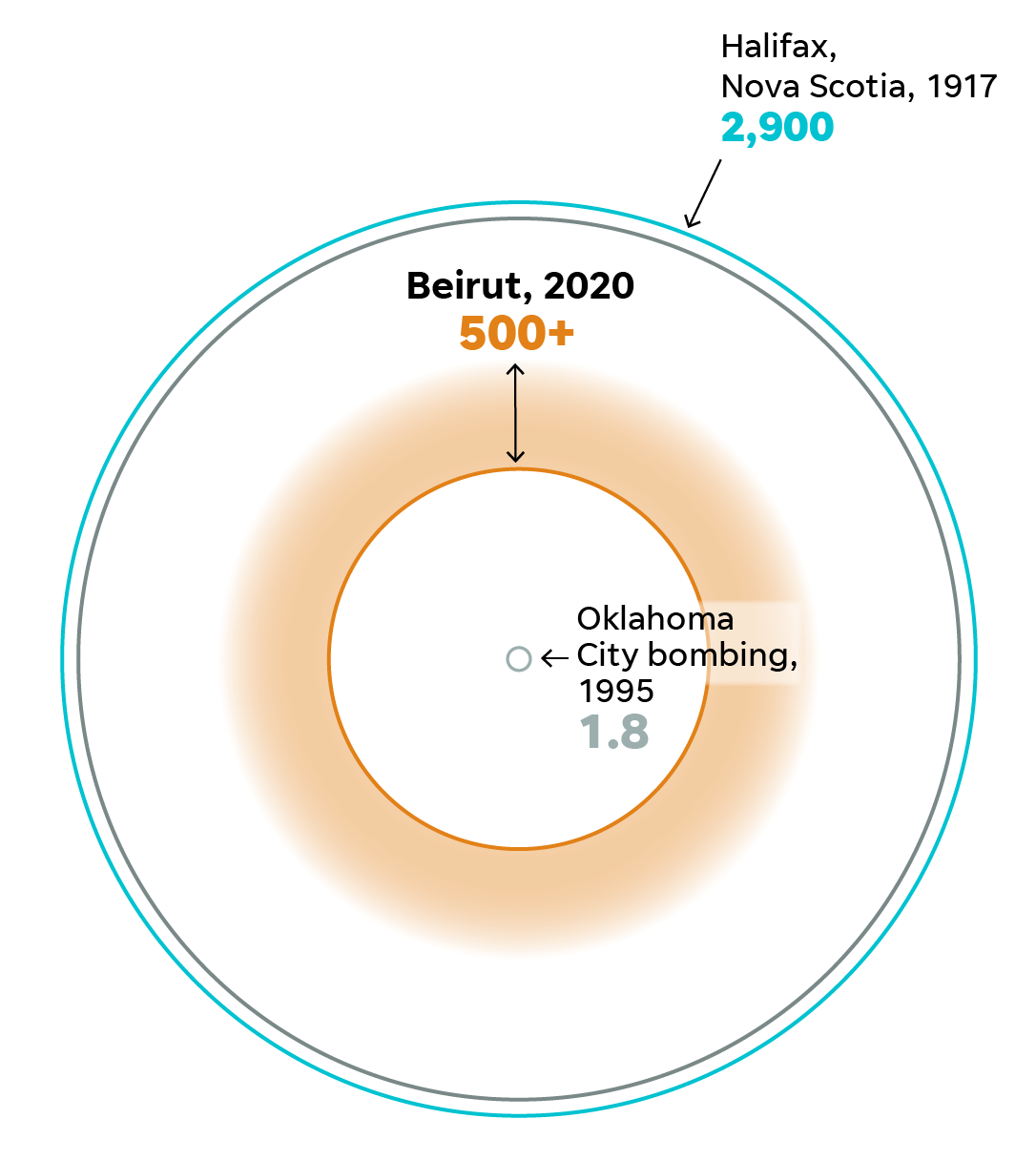
Ammonium nitrate was directly involved in what is considered to be the worst industrial accident in U.S. history. On April 16, 1947, the SS Grandcamp exploded in Texas City, Texas, killing at least 576 people, including all but one member of the local fire department.
After an ammonium nitrate facility caught fire and exploded in West, Texas, in 2013, killing 15, the Bureau of Alcohol, Tobacco, Firearms and Explosives joined other agencies in issuing a detailed advisory on storage: “AN is at risk for explosion when stored near other material that can add fuel to the AN – such as grain, sugar, seeds, sawdust, and most especially petroleum fuels such as diesel. AN is a powerful oxidizer and a rich source of nitrate, which provides energy to an explosion.”
In 2015, 173 were killed by an ammonium nitrate explosion in Tianjin, China, according to official reports.
Congress has asked the Department of Homeland Security to develop regulations for sale and transfer “to prevent the misappropriation or use of ammonium nitrate in an act of terrorism.”
How big was the blast?
Determining the exact cause, size and force of the blast is almost impossible without an on-the-ground-investigation. But we can still try to put things in perspective.
First of all, the blast caused carnage over a 6-mile radius and was felt more than 100 miles away. You can see the impact this would have on major U.S. cities below.
Brian Castner, former EOD officer and weapons investigator on Amnesty International's Crisis Team, urges caution when making comparisons to nuclear weapons.
"There is no radiation, no fires; it's really an inappropriate comparison," he said.
And even comparing the size of the blast to past events or to other munitions can be difficult.
"These numbers are so big they are almost inconceivable," Castner said. "So outside the realm of how the military uses explosives. You don't drop 1,000 MK84s on the same place, at the same time."
2750 tons of ammonium nitrate is the equivalent of over 1000 Mk84 aircraft bombs. An unbelievable blast. We need an investigation to figure out how it detonated (not from newly minted Twitter bomb techs). But more importantly, we need massive massive humanitarian aid for Beirut. https://t.co/x7XWELs2Fq
— Brian Castner (@Brian_Castner) August 4, 2020
To attempt a comparison, one would start by figuring out how much explosive material was present. The Lebanese government has reported 2,750 tons.
You can use this figure get the explosive weight equivalent in TNT. Here's a look at some notable disasters compared with the blast in Beirut.
What's next for Beirut?
Lebanon's Supreme Defense Council recommended that a committee investigate the explosion and present its findings within five days to punish to those responsible, Al-Jazeera reported. The council also recommended declaring a two-week state of emergency in Beirut and giving the military security responsibility.
State prosecutor Ghassan Oueidat ordered security agencies to start an immediate investigation and collect all reports and letters related to the materials stored at the port as well as lists of people in charge of maintenance, storage and protection of the hangar.
Though the cause of the explosion has yet to be officially determined, President Donald Trump called it a "terrible attack" based on the suspicions of U.S. generals he did not name.
There was no evidence the explosion was an attack. Instead, many Lebanese blamed it on decades of corruption and poor governance by the entrenched political class that has ruled the tiny Mediterranean country since the civil war.
Israel, which has seen years of intermittent conflict with Lebanon, particularly and recently with Hezbollah, denied any involvement and offered humanitarian medical aid. France and the United Nations special coordinator also offered humanitarian assistance.
SOURCES USA TODAY research; National Institute of Health; Associated Press; The Maritime Museum of the Atlantic; Texas State Historical Association; Oklahoma Historical Society; American Society of Civil Engineers.
CREDIT Janet Loehrke, Ramon Padilla, Jennifer Borresen, Karina Zaiets, Nadia Al Faour, Jenna Hecker, David Baratz, Javier Zarracina, and Shawn Sullivan contributed to this report. Aerial photos from @rabzthecopter
Originally Published 8:16 a.m. MDT Aug. 6, 2020
Updated 4:17 p.m. MDT Aug. 6, 2020
No comments:
Post a Comment